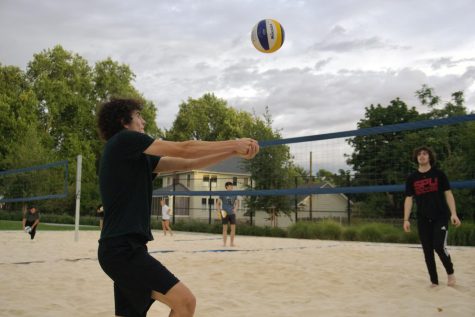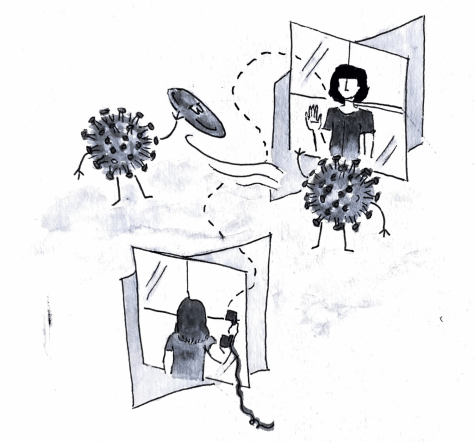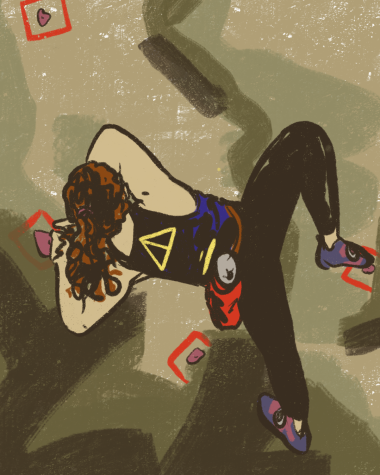The ups and downs of club volleyball
October 29, 2020
Club volleyball has had a tumultuous history at Whitman but has endured as a space centered around competition and community.
John-Henry Heckendorn, Whitman class of 2012, played volleyball competitively throughout his high school experience in New England. When it was time to apply to colleges, he knew that playing the sport was something he wanted to continue. Needless to say, he was put off of Whitman when he realized the college did not have men’s volleyball in any shape or form.
“It was almost one of the factors that made me not [want to go to Whitman],” Heckendorn said. “Two other schools I was looking at had men’s club volleyball.”
However, he brought up the possibility of starting a club team at admitted students day and found the idea was well received. Once on campus, he and a friend became practice players for the women’s varsity team and then went on to found the men’s volleyball club in the fall of 2008. They quickly found out that creating the club might have been the easiest part of the process.
“[Getting] funding was really challenging, our first budget was $400 and we really had to fight for that,” Heckendorn said. “As we had more success as a durable sustainable program and competitively, the administration showed us some love, and then as we competed for gym space, as we put forward a women’s club team, they sort of pulled back.”
The next three years would turn out to be full of trials and tribulations, from fighting for gym space to organizing Whitman’s first on-campus club tournament. After a while, Heckendorn realized that his competitive goals for the team would have to take a backseat in order for the program to live on after his graduation.
“We couldn’t just be a squad of six to ten guys who were all really good, because that team wasn’t going to be enough of a community to survive,” Heckendorn said. “Winning games was important and fun, but the health of the program was really going to be around the ability to build community.”
Some two years after the men’s club volleyball team was established, Amanda Holberg, class of 2012, founded a corresponding women’s club program. She had played on the college’s varsity team for a year, but found that it was too large of a commitment and decided to move on from the team.
“I was bummed to be letting go of my sport essentially for the first time. I was very good friends with John-Henry and he had started the men’s team, and so that’s what inspired me to start the women’s team.” Holberg said.
Similarly to the men’s team, competition was a part of the club, but it was not the end all be all. They placed emphasis on building a community around the sport because the people were what made the club possible and unique.
“[Attracting] people who loved playing the game was how we got people in the gate, but then we wanted to build a culture,” Holberg said.
Yussef Elbagory, a senior and current captain of the men’s team acknowledged that although the clubs changed and adapted over time, they have still maintained a similar identity and struggled with similar problems. In particular, participation and funding have been lasting issues on both teams, but they were serious enough that the women’s team was formally disbanded in 2018.
“The issue with club volleyball is that obviously the institutional memory that exists within every four years sometimes dies depending on the interest, so you might need to revive the team and build something from scratch,” Elbagory said. However he acknowledged there was some continuity, “the culture back then, I would argue is pretty much the same. Just everyone coming together and playing. Just stop by any given weekday and we’ll be sure to make you feel at home.”







